Spelling Teaching Resources
Explore spelling games, word lists, activities, worksheets and more to help you teach primary students how to spell a wide variety of words!
Aligned with the Australian English Curriculum, every resource in this expansive collection has been created by a teacher for teachers just like you. Best of all, each resource has undergone our thorough review process to ensure it's ready for your lesson plans and your students.
New to teaching spelling? Or maybe you're just looking for fresh ideas to engage students with the topic? Read on for a primer from our teacher team, including spelling strategies that can help your students become better spellers!
6 Spelling Strategies Every Student Should Learn
Spelling is a fundamental skill that plays a crucial role in literacy development, but in a world of hastily typed (and poorly spelled) text messages and digital tools with built-in spell checker functionality, it can seem like learning how to spell words correctly is falling by the wayside.
So how do you ensure your students aren't just adding to the jumbled up world of words? Arming students with spelling strategies they can use when they encounter new words can help!
The following spelling strategies are great for struggling students and their advanced peers alike as they empower students to face new words without fear — unlike the rote memorisation of words that was once common in spelling instruction.
1. Teach Students About Word Families
By teaching word families, we can help our students recognise and understand how certain letter combinations consistently appear in related words. In turn, this helps them with spelling related words and increasing their vocabulary.
Show your students how words with the same root or base share similar spellings, and have them explore and practice word families by creating word trees or sorting words with common patterns.
2. Work on Breaking Down Syllables
Teaching kids to divide longer words into manageable syllables isn't just a good spelling strategy for upper years students. It can also help them with the pronunciation of new words!
Teach students to identify syllable patterns and break words into syllables. You might want to practise clapping or tapping out syllables, then have them spell each syllable before putting a whole word together.
3. Teach Chunking and Chaining
Breaking spelling words into smaller, manageable chunks or patterns is a helpful strategy for students of various ages — especially those tackling complex words.
To do this, teach your students to identify prefixes such as re- and un-, suffixes such as -ful and -able and root words within longer words. Practice breaking their spelling words into chunks and then combining them accurately.
4. Teach Contextual Spelling
Do your students get their spell words just right in isolation but struggle when writing sentences and paragraphs?
Contextual spelling is a strategy that could help. This comes down to simply having them practise writing their spelling words within sentences, reinforcing word usage and allowing them to apply their spelling know-how in meaningful contexts.
5. Create Spelling Lists With Word Sorting
You may notice that some of the spelling word lists on the Teach Starter site are based on patterns. That's because we recommend categorising words based on specific spelling patterns, helping your students notice similarities and differences.
In addition to using the lists provided, why not work backward? Provide students with a pattern, then provide words that they can spell using that pattern.
6. Use Mnemonics
While English is full of spelling patterns — from words that all follow the long e pattern or all contain the letters igh — it also contains a fair share of words that seem to break all the rules.
Teaching students mnemonics such as 'i before e, except after c and when sounding like a' gives them tips to fall back on when they encounter those rule breakers.
You can also teach difficult words in meaningful sentences or short stories to reinforce their usage, making it easier to recall both meaning and spelling.
Speaking of ...
15 Difficult Words to Spell — And How to Teach These Irregular Words
As we mentioned, the English language is full of tricky irregular words that don't seem to have discernible phonetic patterns and can't simply be broken down via chunking or syllables. That makes them difficult words to spell!
Here's a look at some of the more common difficult words to spell that our teacher team has encountered over the years and some of our best tips on how to help your students remember them!
Here's a list of some commonly difficult words for kids to spell, along with tips on how to effectively teach them:
1. Wednesday
How to Teach It — Break this tricky day of the week word down, sounding it out — 'Wed-nes-day' — to emphasise the correct spelling. Practice saying and writing the word several times to reinforce the spelling pattern.
2. February
How to Teach It — The second month is often spelled without the first r in the right place. To address this, use the syllables strategy mentioned above, breaking down the word into 'Feb-ru-ary' to make it easier to remember.
Emphasise the silent 'r,' and have your students visualise the sequence of syllables.
3. Beautiful
How to Teach It — Break the word into parts — 'beau-ti-ful.' Discuss the rule of 'i before e except after c' and practise spelling similar words that follow this pattern.
4. Definitely
How to Teach It — Break the word into syllables ('def-i-nite-ly') and emphasise the tricky 'i' and 'e' placement. Use repetition and context-rich sentences to reinforce the spelling.
5. Restaurant
How to Teach It — Teach by syllables ('res-tau-rant') and emphasise the challenging 'au' sound. Encourage students to picture the inside of a restaurant to remember the spelling.
6. Accidentally
How to Teach It — Highlight the repeating letters ('c' and 'l') and break the word into manageable parts ('ac-ci-den-tal-ly').
7. Necessary
How to Teach It —The mnemonic phrase 'Never Eat Crispy Crust, Eat Salad Sandwiches And Remain Young' is a teacher team favourite to help kids remember the order of the letters in necessary.
8. Friend
How to Teach It — Friend is misspelled by young students, but emphasising the 'ie' vowel pair can help them get it right. Practise using the vowel pair within other words like 'field,' 'chief,' and 'shield.'
9. Because
How to Teach It — We recommend using the mnemonic strategy for this difficult word, along with practising writing the word in context.
Our favourite mnemonic for because is 'Big Elephants Can Always Understand Small Elephants.'
10. Receive
How to Teach It — Because this breaks the common pairing of 'ie,' receive is often misspelled by students (and adults!).
To teach it, break the word into parts ('re-ceive') and emphasise the 'i' before 'e' rule.
11. Opportunity
How to Teach It — You have an opportunity to help kids remember this one with a breakdown of the syllables 'op-por-tu-ni-ty.' You may also want to review other words with two 'p's, such as appreciate and disappoint.
12. Pronunciation
How to Teach It — Pronouncing new words can be challenging for students, but so is spelling the word pronunciation! To teach this tricky word, use the syllables strategy, emphasising each one — pro-nun-ci-a-tion.
13. Exercise
How to Teach It — You can use visual associations to remember the 'x' and 'c' placement in exercise — like a jumping 'x' doing exercise. You may also want to practice other x words like 'exert' and 'extra.'
14. Separate
How to Teach It — Highlight the tricky 'a' and 'e' placement in separate, and teach the syllables — sep-a-rate.
15. Temperature
How to Teach It — Once again, temperature is a difficult spelling word that can be taught using syllables — tem-per-a-ture.
- Plus Plan
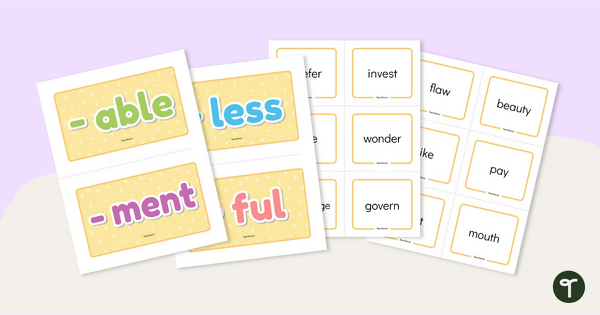
Words with Suffixes - Word Building Activity
Build words by matching the root word to suffixes and recording the new words on the answer sheet.
- Plus Plan
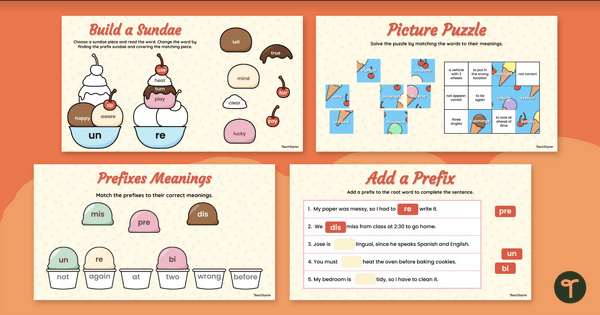
Google Slides Interactive - Prefixes Activity
Practise adding prefixes to words by identifying, defining, and matching them in context.
- Plus Plan
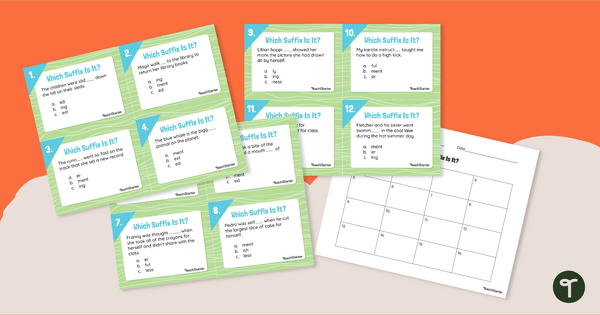
Which Suffix is it? - Task Cards
Practise using suffixes in sentences with a set of printable suffix task cards.
- Plus Plan
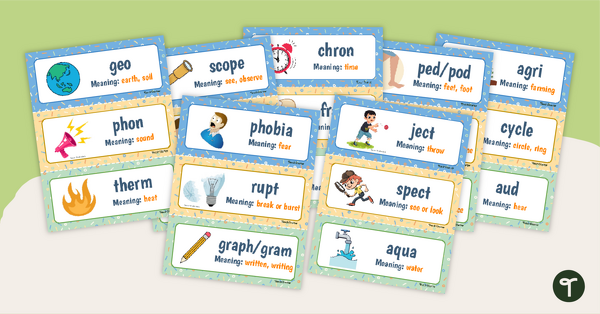
Greek and Latin Root Words - Illustrated Word Wall
Use word wall displays to build student vocabulary with daily exposure to Greek and Latin root words.
- Plus Plan
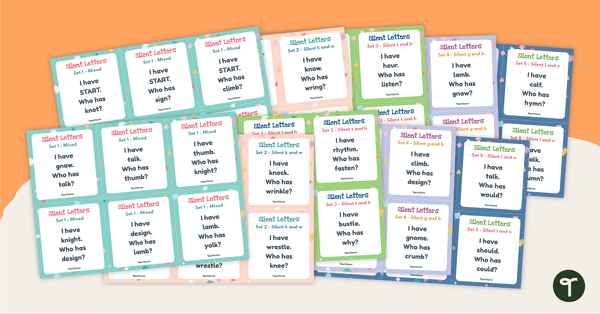
I Have, Who Has? Game - Silent Letters
Review silent letters in one- and two-syllable words with this whole-class literacy game.
- Plus Plan
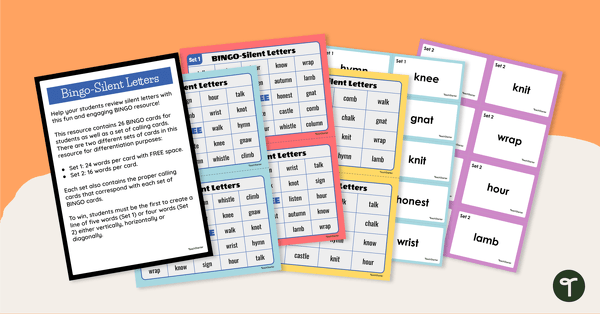
Silent Letters Bingo
Help students master silent letters with this engaging game of Bingo.
- Free Plan
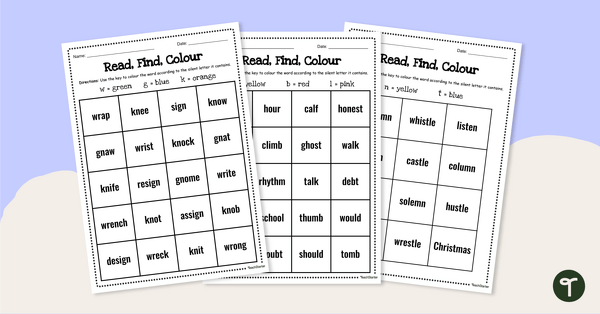
Silent Letters Worksheets - Read, Find and Colour
Identify silent letters in words with this set of three find and colour worksheets.
- Plus Plan
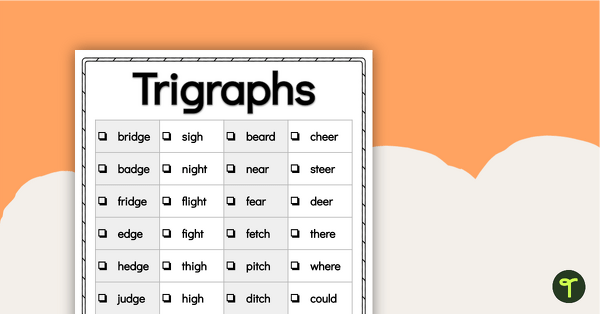
Word Study List - Trigraphs
Introduce and explore common trigraphs with this extensive list of words.
- Plus Plan
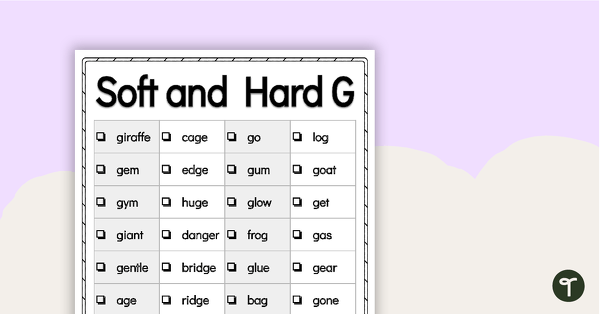
Word Study List - Hard and Soft G
Introduce and explore words containing the hard and soft g with this extensive list of words.
- Plus Plan
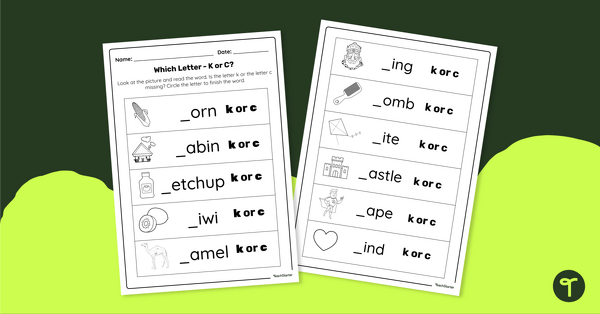
Which Letter? Worksheet - K or C
Practise identifying when to begin words with the letter K or the letter C with this printable two-page worksheet.
- Plus Plan
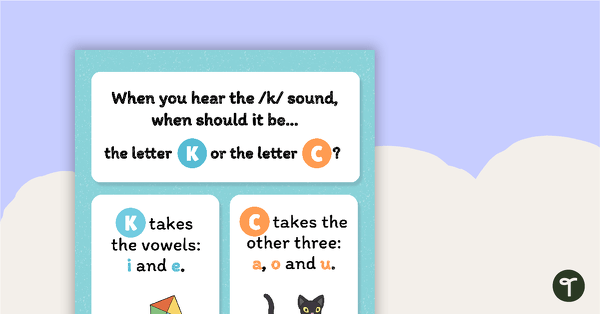
Which Letter? Poster - K or C
Help your students remember when to use the letter K and when to use the letter C with this colourful classroom poster.
- Plus Plan
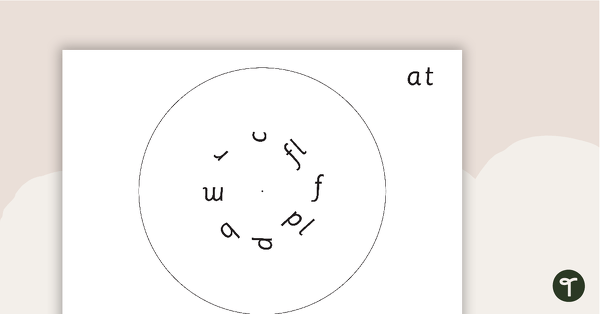
CVC Spinner
A set of 22 CVC spinners for students to practice Consonant Vowel Consonant words.
- Plus Plan
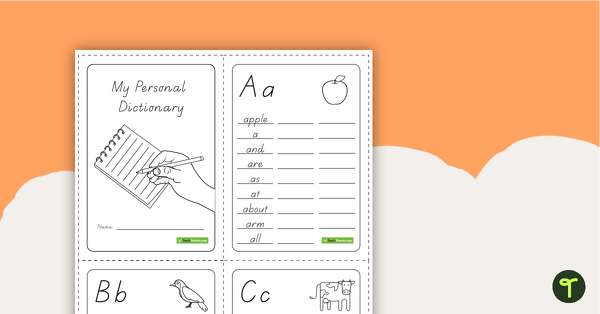
Printable Personal Dictionary for Primary Students
A printable booklet with pictures and sight words for students to create their own personal dictionary.
- Plus Plan
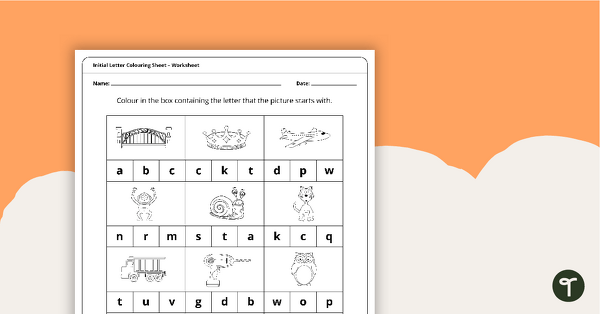
Initial Letter Colouring Worksheet
Identify the first letter for each picture and then colour it in.
- Plus Plan
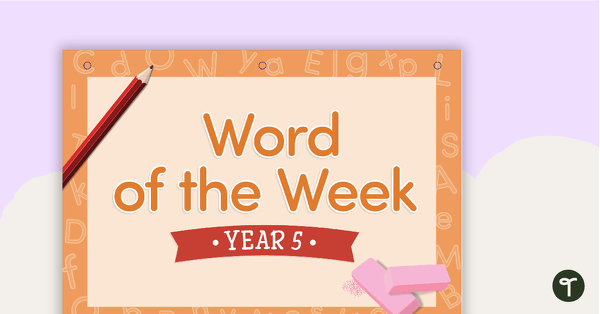
Word of the Week Flip Book - Year 5
A 43 page flip book for introducing new vocabulary to year 5 students.
- Plus Plan
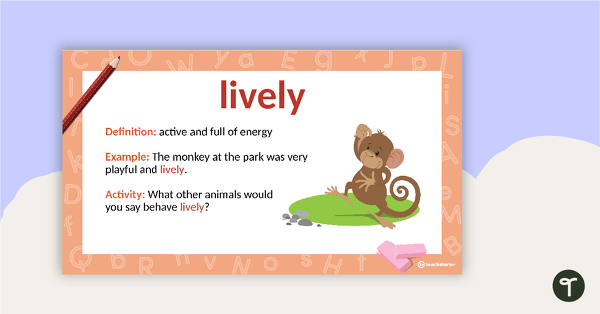
Word of the Week PowerPoint - Year 1
A 40 slide PowerPoint Template for introducing new vocabulary to year 1 students.
- Plus Plan
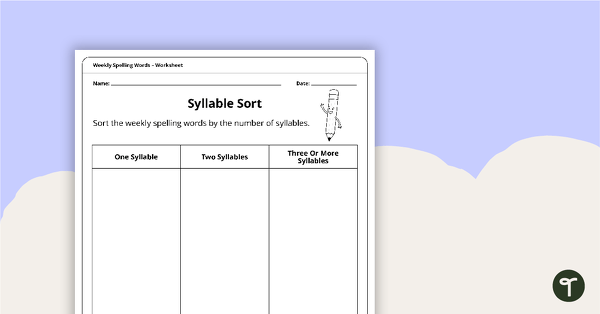
Generic Spelling Activity Worksheet Pack
A set of 6 generic spelling activity worksheets that can be used with any spelling list.
- Plus Plan
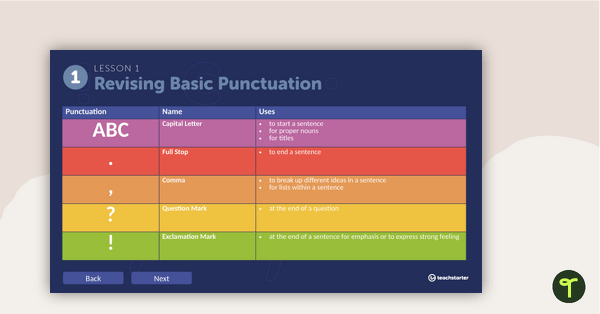
Paragraph Study Punctuation Interactive PowerPoint
Interactive PowerPoint presentation allowing teachers and students to learn and revise punctuation by highlighting paragraphs.
- Plus Plan
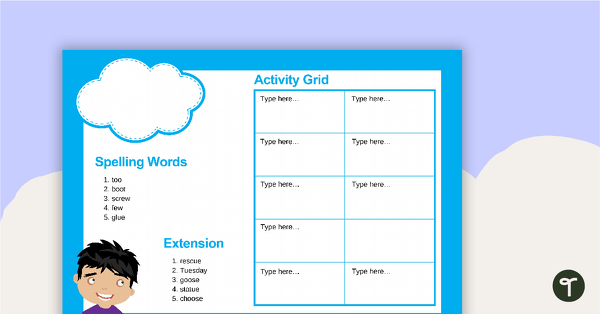
Weekly Spelling Words and Activity Grid - Editable Word Version
An editable spelling grid and activities template.
- Plus Plan
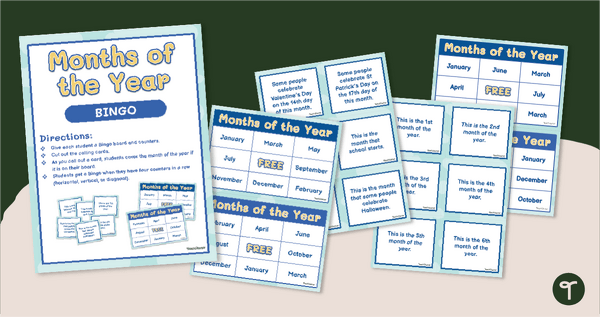
Months of the Year Bingo
Recognise and order the months in a year with a printable Bingo Game!
- Free Plan
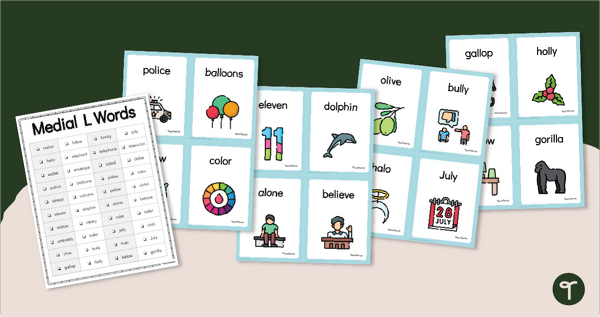
Medial L Words - List & Flashcards
Practise reading and articulating Medial L words with a list of 40 words and accompanying illustrated flash cards.
- Plus Plan
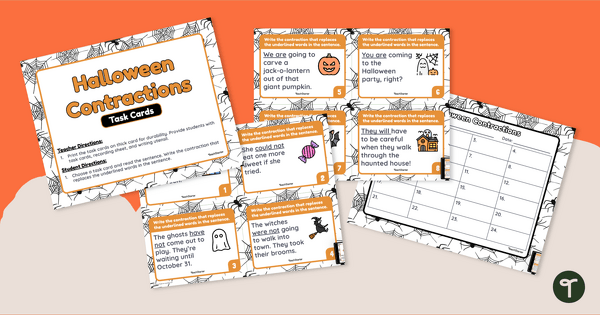
Halloween Contractions Activity - SCOOT! Card Game
Identify contractions and the words they replace with a printable Halloween Contractions Activity for Year 2.
- Plus Plan
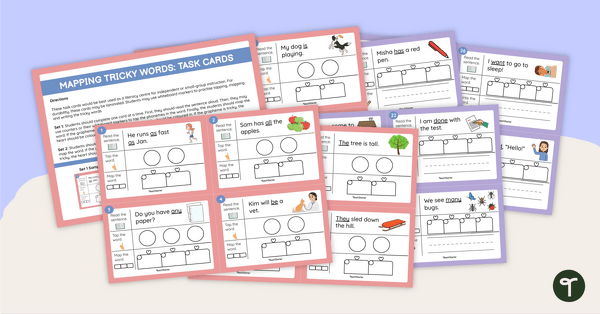
Mapping Tricky Words - Task Cards
Practise identifying the tricky parts in high-frequency words with these differentiated sets of tricky word mapping task cards.
- Plus Plan
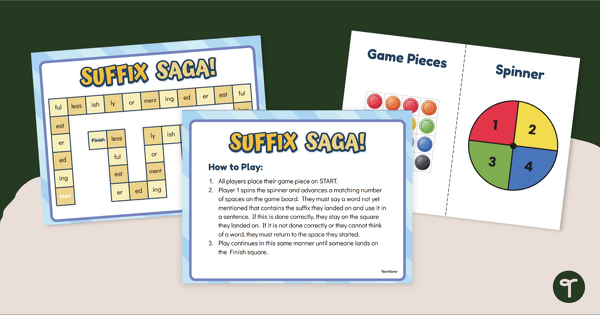
Suffix Saga - Vocabulary Game
Practise building and using words with common suffixes with a fun vocabulary game!
- Plus Plan
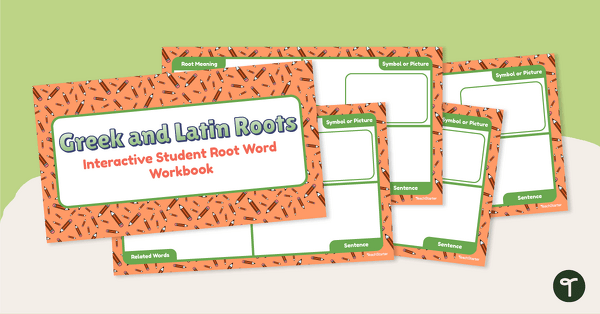
Greek and Latin Roots- Vocabulary Notebook
Enhance vocabulary containing Greek and Latin roots with a Google Slides Interactive vocabulary notebook. Also available in print format.
- Plus Plan
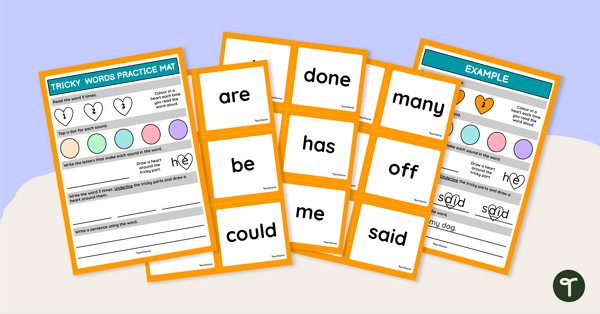
Tricky Word Flashcards and Practice Mat
Practise identifying the tricky parts in high-frequency words with this practice work mat and accompanying tricky word cards.
- Plus Plan
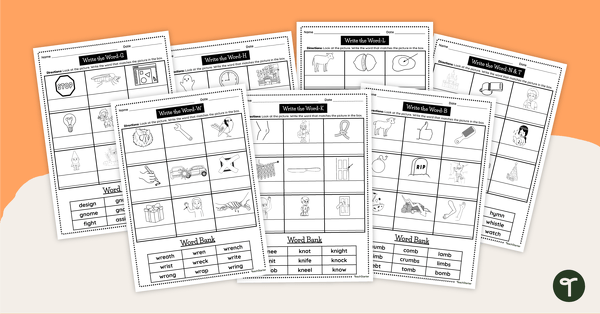
Silent Letters Worksheets - Word and Picture Match Up
Explore silent letters in one- and two-syllable words with this set of 7 targeted worksheets.
- Plus Plan
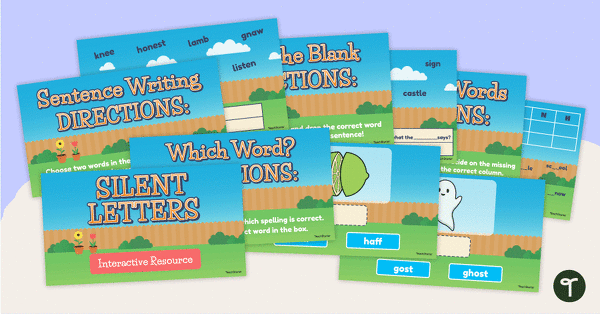
Silent Letters Interactive Activity
Explore silent letters in one- and two-syllable words with this interactive spelling activity.
- Plus Plan
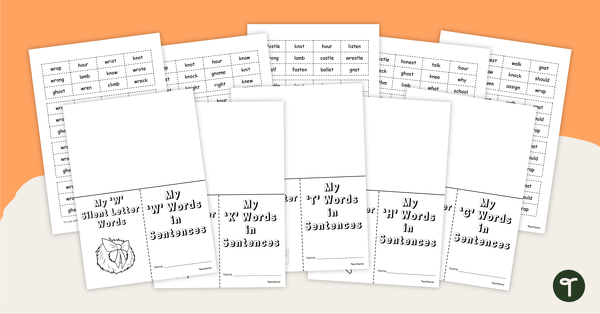
Silent Letter Flap Books
A great worksheet alternative to help your students identify silent letters in words.
- Plus Plan
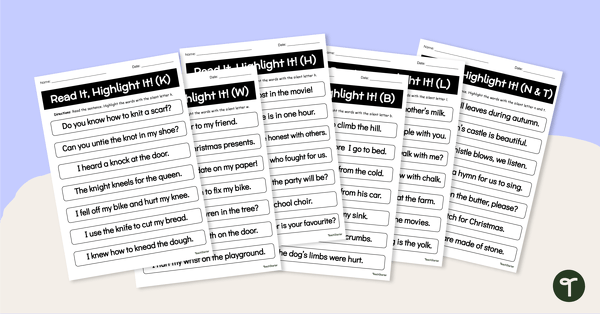
Silent Letter Worksheets - Read It, Highlight It!
Identify silent letters in words with this set of six decoding worksheets.
- Plus Plan
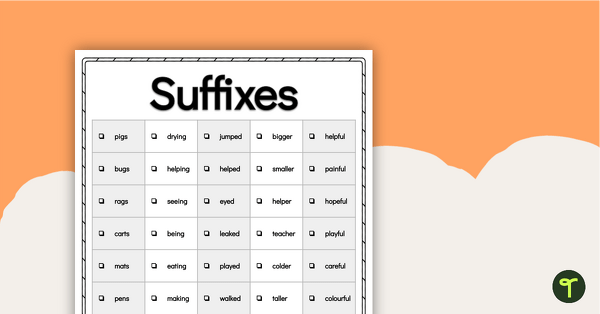
Word Study List - Suffixes
Introduce and explore common suffixes with this extensive list of words.
- Plus Plan
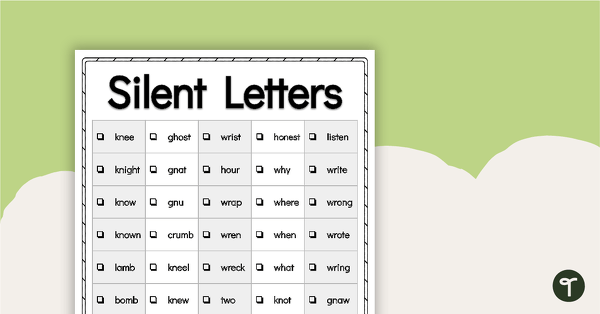
Word Study List - Silent Letters
Introduce and explore words containing silent letters with this extensive list of words.